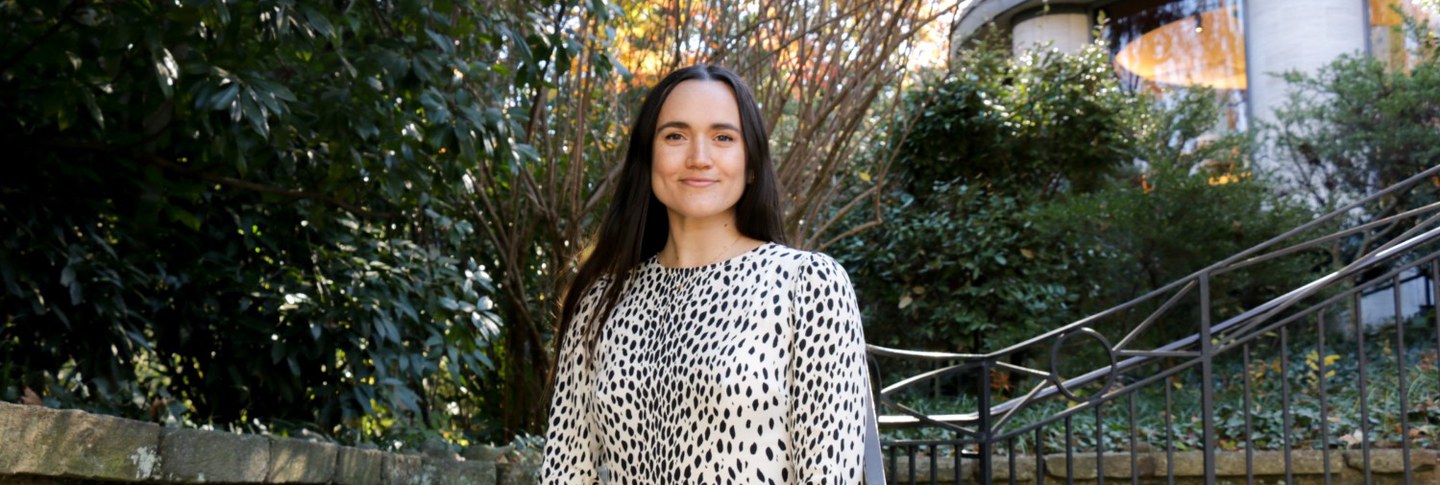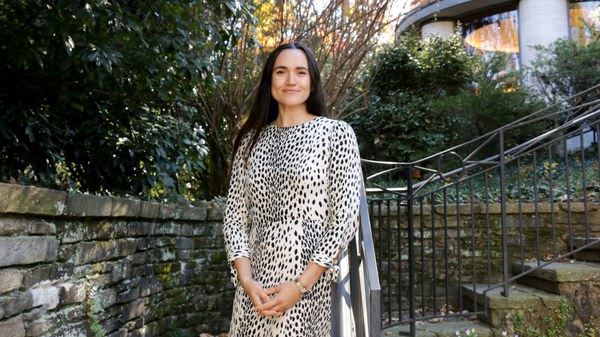Annick Benavides, PhD candidate at Harvard University, is a Tyler fellow in Pre-Columbian Studies. Her research report, “Treasuring Lake Titicaca: The Virgin of Copacabana, the Carabuco Cross, and Colonial Extraction in the Andes, 1570–1700,” considered the intersection of telluric sacredness and mining in the Andes Mountains through Christian sculptures in the Lake Titicaca region.
Q&A with Annick Benavides
What are the sculptures known as the Virgin of Copacabana and the Carabuco Cross?
The Virgin of Copacabana is a sculpture of the Virgin Mary made from the heart of a cactus (maguey) in Peru in the sixteenth century. She was supposedly made by an Indigenous artist for his hometown of Copacabana. She’s about a meter tall and is usually dressed in beautiful clothing and expensive jewelry made of precious minerals, jewels which were actually robbed in 2013. For communities in the Andes, sculptures of the Virgin are considered naked unless they’re wearing fabric clothing, usually donated by communities that are caring for it.
On the other side of Lake Titicaca is the Cross of Carabuco. Originally it was probably just two rustic pieces of wood nailed together. It’s supposed to represent one of the first attempts to Christianize in the Americas when an apostle went to Lake Titicaca and left his cross in Carabuco. If you go to Carabuco today, you’ll see a cross that the townspeople keep in their church, about fifteen to twenty inches large. It’s been sanded down and painted, so it looks a bit more artistic than it might have before. Supposedly splinters and relics were taken from it all throughout its history—it was allegedly even cut in half and one part taken elsewhere in Bolivia, but the cross the townspeople conserve doesn’t look like it was cut in half.
What do they indicate about Christianity among Indigenous Peruvians?
It’s easy when people think about Indigenous studies to think there’s some endemic, innate relationship with the land that then gets expressed through different types of objects. But I think it’s a more co-creative experience. The sacredness of the land is a decision that’s enacted, and it emerges from community rituals that are performed. I’m looking at how the sculptures of the cross and the Virgin Mary in these particular towns helped “resacralize” the sacred geography around Lake Titicaca as a Christian place. It’s important to note that Indigenous people have been making Christian sculptures since the dawn of Christianity in this area, so there’s nothing less Indigenous about their Christian practices than their Pre-Columbian practices. It’s not the same type of sacrality that existed before by any means, but I’m still looking at Indigenous agency in that process: how the townspeople were (or were not) promoting these sculptures, the divergent paths of the sculptures, and how the Spanish colonizing project took advantage of these sculptures to justify their conversion project and the extraction of minerals from the region.
I even hesitate to say the “resacralization of their sacred geography” because often what I’m referencing might be a sixteenth century Quechua or Spanish concept. Dumbarton Oaks has been a good place to talk with people in Garden and Landscape Studies, along with colleagues in Pre-Columbian Studies like Ann Peters, Bat-ami Artzi, and Patricia Chirinos Ogata, to think about how to portray sacred geographies in English writing and to consider what type of vocabulary I’m using.
What is their significance in the context of colonial enterprise near Lake Titicaca?
My project aims to further explore the intersections of popular religiosity and the economics of colonial extraction. The whole project emerged because I was fascinated with a print from 1641 that depicted the Virgin of Copacabana. The print associated her with passages in the Bible that talk about gems and veins of silver underneath the earth and hidden nuggets of gold waiting for the ingenuity of a miner to extract it. The Augustinians kept associating this Virgin sculpture (linked to treasure) with the Carabuco Cross, so I am looking at what these two sculptures might have to do with mining.
Carabuco was a strategic node for mining aspirations for the Spanish when they first arrived in Peru. It was the gateway to many gold mines where the Inca had managed huge workforces. Copacabana later became the more important Christian devotional site, and it was located a short distance off a major mining highway that moved all the silver from Potosi to the global market.
May Wang was the 2020–2022 postgraduate writing and reporting fellow. Photo by Emily Orr, 2021–2022 humanities fellow.

